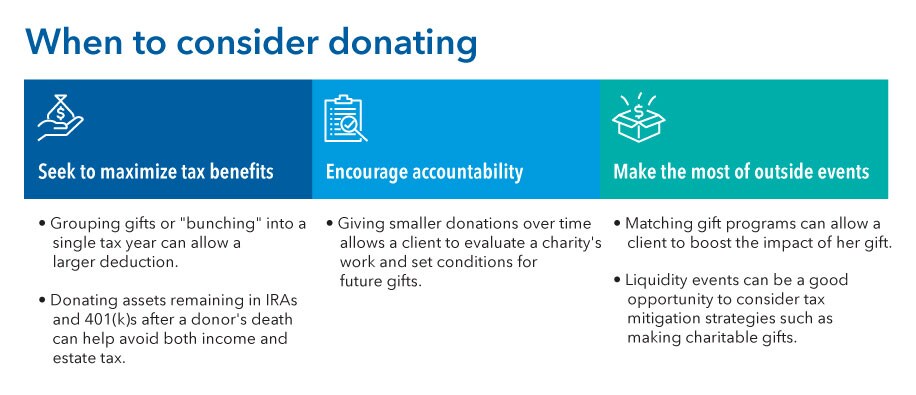Many high net worth investors have a desire to give to charitable causes, but the options — and the need — can be overwhelming. According to the Internal Revenue Service, in 2023 there were 1.97 million nonprofits in the United States alone.
But savvy financial professionals can help investor clients navigate the nonprofit landscape with a charitable giving plan that guides them as they consider the causes and specific charities they hope to support, while also optimizing any tax benefits that accompany those donations.
Charitable planning is among the services more likely offered by high-growth advisors, according to Capital Group’s Pathways to Growth: 2023 Advisor Benchmark Study. Helping clients engage in strategic philanthropy can help you deepen the client relationship.
Here are five steps to help your clients create personalized charitable giving plans:



